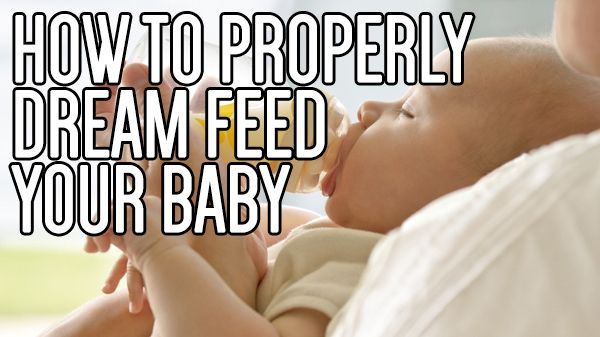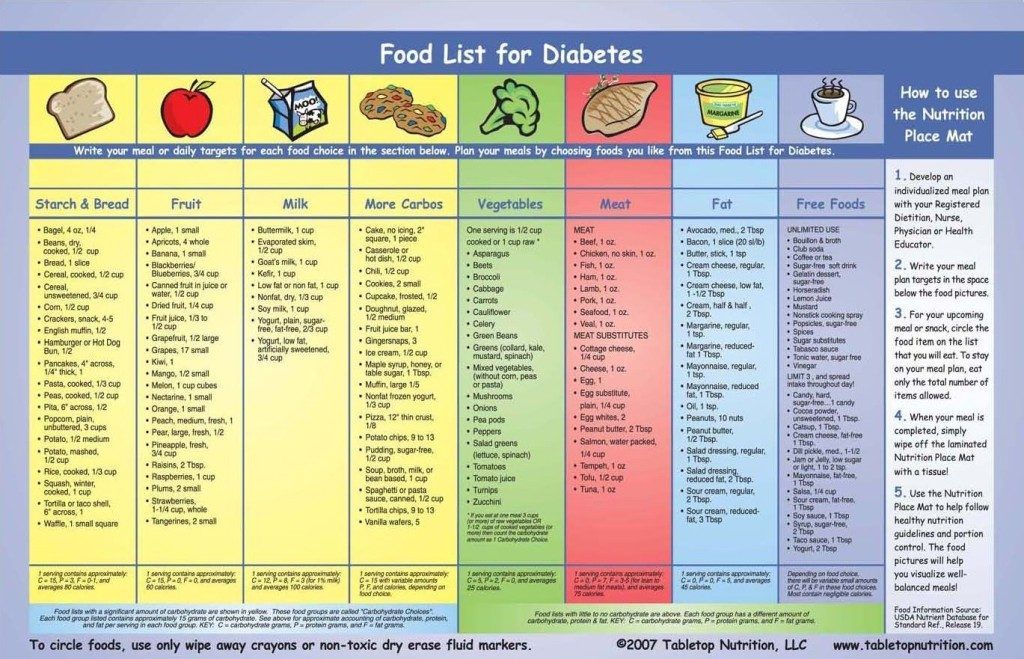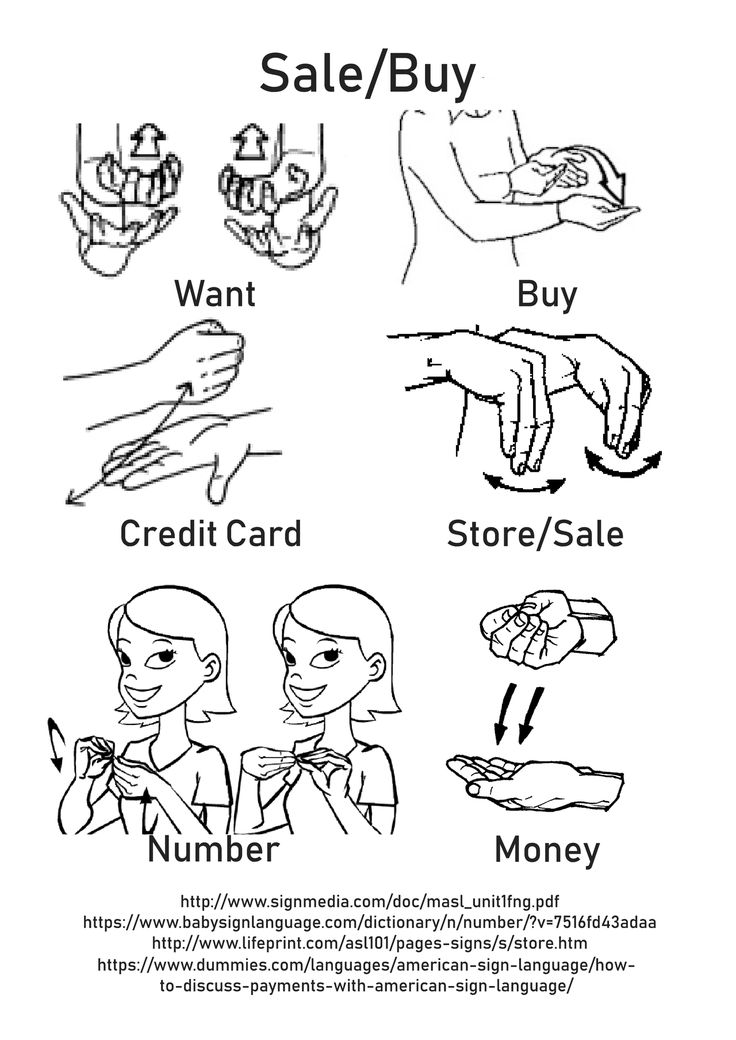What not to feed your baby in the first year
Foods to Never Feed Your Baby (3 Months of Age to 1 Year)
According to the CDC, you can start introducing solid foods to your baby at around 6 months old. As long as they are receiving a balanced diet and a variety of nutrient-enriched foods, most vegetables, fruits, proteins, and grains. When it comes to more allergenic foods, it is best to introduce them after other baby-friendly foods. Always consult your pediatrician with concerns.
Growing babies soon start to show interest in trying new foods, and it's normal to want to introduce them to new tastes and textures. But not all foods are safe for your baby. Here is a list of foods you should avoid feeding your baby during the first year of growth.
More: Can You Eat Thanksgiving Turkey While Pregnant?
Pureed Foods vs Finger Foods
Babies are typically introduced to solid foods around six months of age. For newborns and babies less than six months old, solid foods may pose a choking hazard. So for young babies, many parents will turn to baby pureed foods. Pureed foods are softer than finger foods and easier on a baby’s digestive system. However, some parents turn to baby-led weaning which can also be a great option to introduce your little one to solid foods.
Honey
Infants under a year old should not be fed any form of honey (raw, baked, or cooked). Honey is bad for babies because it can harbor Clostridium botulinum, which can produce botulinum spores. These spores secrete toxins that can lead to muscle weakness, poor sucking, a weak cry, constipation, decreased muscle tone, and even paralysis in young infants. An infant's intestinal tract isn't strong enough to fight off these spores and toxins.
Infant botulism can be prevented by avoiding raw honey and avoiding contact with soil contaminated with the same C botulinum spores. This is rare and mostly found at agricultural sites in Utah, California, or Pennsylvania.
Cow's Milk
Stick to breast milk or formula until your child's first birthday. A child under the age of one can't digest the enzymes and proteins in cow's milk, and certain minerals in it can cause damage to your baby's kidneys. This is also true for certain dairy products such as cottage cheese. Also, unlike breast milk or formula, cow's milk doesn't provide all the proper nutrients for a growing infant. So if you are breastfeeding or if you are bottle feeding with breast milk or infant formula then keep doing so.
A child under the age of one can't digest the enzymes and proteins in cow's milk, and certain minerals in it can cause damage to your baby's kidneys. This is also true for certain dairy products such as cottage cheese. Also, unlike breast milk or formula, cow's milk doesn't provide all the proper nutrients for a growing infant. So if you are breastfeeding or if you are bottle feeding with breast milk or infant formula then keep doing so.
Egg Whites
Don't feed egg products to a child under the age of one, to avoid an allergic reaction or allergies in the future. While the proteins in egg yolks are seldom a source of allergens, the proteins in egg whites may cause allergic reactions. By the age of five, a child normally outgrows the potential for an allergic reaction to egg whites.
Citrus
Avoid feeding citrus fruits and juices to your baby for the first couple of months. These foods are high in Vitamin C and acid, which can cause an upset tummy and/or acid reflux in your baby. Remember, their digestive system is still developing.
Remember, their digestive system is still developing.
Seafood/Shellfish
Another potential allergen for babies is seafood, and particularly shellfish. Talk to your pediatrician before feeding your baby boneless fish -- even tuna. Do not give any sort of shellfish (such as shrimp, clams, swordfish, mackerel, or crabmeat) to your baby until it's been discussed.
Wheat
Due to allergens in wheat, it is best to wait until your baby is one, two, or even three years old before introducing it into your baby's diet. If you have checked with your pediatrician and are sure that your baby hasn't had an allergic reaction to rice, oats, or barley, you may try introducing wheat at the age of eight or nine months.
Large Chunks of Food
It is widely recommended that you feed your child breast milk or formula for the first four to six months. Once you start baby on solids, pea-sized foods are safest, to prevent choking. Make sure that vegetables are diced and cooked up soft, and cut fruits into quarters to avoid them getting stuck in your child's throat.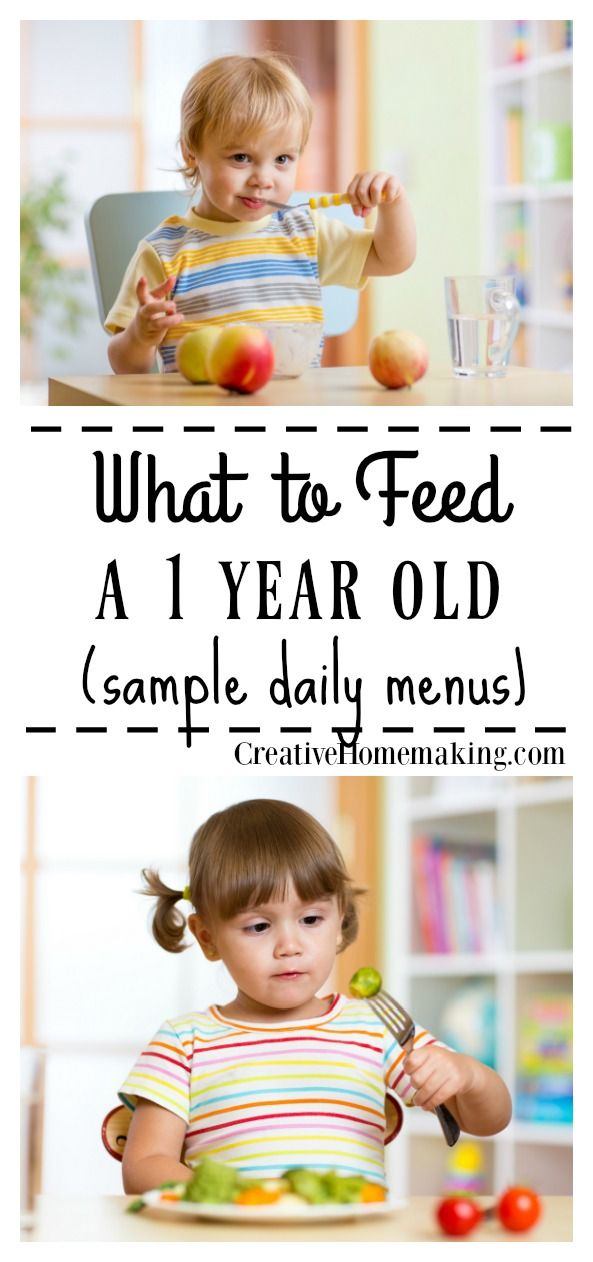 Meats and cheese should also be cut into very small pieces or shredded.
Meats and cheese should also be cut into very small pieces or shredded.
Soft, Sticky Foods
While most soft foods are good for young babies, some soft foods should be avoided. Sticky foods like jellies and marshmallows should not be fed to a baby before six months as these foods can get stuck in a baby’s throat and block the child’s airway.
Small, Hard Foods
Foods like whole nuts, popcorn, whole grapes, raw vegetables, raisins, candies, dried fruits, seeds, or any other small, hard food should not be given to a baby. They are all choking hazards and can easily become lodged in your baby's throat. Any food you give your baby should be diced into small bits and cooked until soft.
Fruits
Below is some insight on certain fruits that many parents have questions about feeding their baby.
- Strawberries and raspberries: Many berries are packed with vitamin C and are good for babies and young children. The American Academy of Pediatrics that you hold off introducing these fruits until after they have tried other solids first.

- Pineapple: Pineapple is considered a safe food for your baby to eat. However, it is a firm fruit and should be sliced into thin strips since it can be a choking hazard when cubed.
- Melon: Watermelon is a good example of a first fruit you can offer to your baby. It is soft, easy to chew, and full of vitamins. It is made up of mostly water so it is also great for hydration.
- Papaya: This is a superfood that is super healthy and great for your baby. The recommendation is to wait to introduce it to your little one until they are 7 or 8 months old.
Vegetables
Vegetables are healthy options for kids, but when is the right age for babies to start eating their veggies? Here is a list of veggies and produce that parents have questions about. You can find below whether or not they are safe to give to your baby.
- Spinach: Believe it or not, raw spinach is full of nitrates. This is not to be confused with synthetic nitrates but is still not good to give much to little ones.
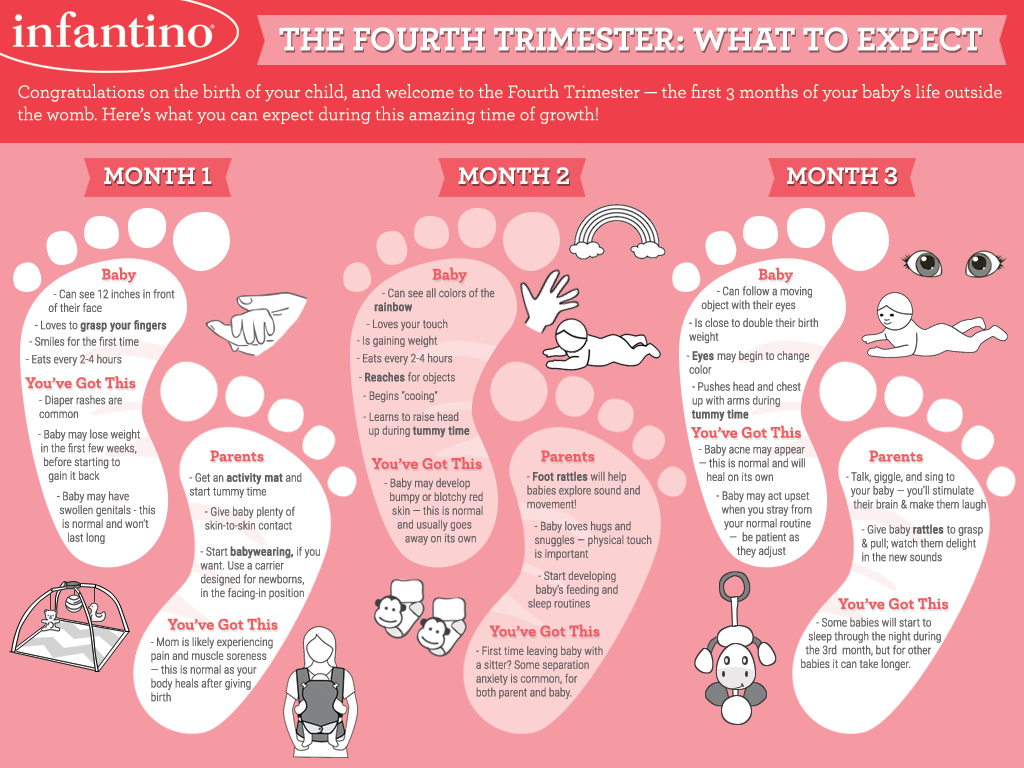 It is recommended that if you give them spinach, make sure it is cooked and pureed.
It is recommended that if you give them spinach, make sure it is cooked and pureed. - Lettuce: This can be hard for your baby to chew, so it's best to wait until they are between 9 months and 1 year old.
- Peas: Green peas are a great starter food. They are easy to pick up, offer a new texture, are small enough to avoid choking and can be pureed.
- Onions: Many parents add cooked onions to homemade baby food. They are full of vitamin C and can be introduced between 6 and 8 months old.
- Garlic: If you cook frequently then you know that garlic can add a whole new flavor to certain foods. You can cook down and add a small amount to your baby's food between 6 and 8 months old.
- Sweet Potatoes: This is another great first solid. Soft, cooked sweet potato cut into chunks is perfect for a 6-month-old.
- Potatoes: These are considered starchy vegetables so even though they are safe to give to your baby, you will want to do it in moderation.

Meats
Introducing meat to your baby's diet can happen after starting solids, which is usually around 6 months. Poultry and lean beef are fine to give your little one in small amounts. Below are two types of meat that should be avoided.
- Hotdogs: Hotdogs are a choking hazard. It is not recommended to give them to young children under 4 years of age. When they are old enough, they can be thinly sliced or minced.
- Bacon: It is best to wait until after your baby's first birthday to give them any bacon. It is full of synthetic nitrates and possible carcinogens. It is generally considered unhealthy and should be offered rarely.
Fruit Juice
Most juices are full of added sugar. Since babies are generally still drinking from bottles under 1 year old, it is not advisable to put fruit juice in them. It is known to cause tooth decay. Offer your baby a little water after 6 months if you are looking to give them something besides breast milk or infant formula.
What About Peanut Butter?
Experts previously believed that introducing peanut butter or any sort of nut product at an early age could lead to nut allergies. Times have changed and many pediatricians encourage the introduction of peanut butter to children between 6 and 8 months after they have tried a few solid foods with no issues. The AAP recommends talking with your pediatrician about introducing nut products to your baby, once he is eating solid foods. If your baby doesn't have any food allergies or risk factors, your doctor will probably advise feeding him a thin layer of creamy (not chunky) peanut butter on a cracker or bread, or foods that have peanut butter in them. Never give whole peanuts or nut pieces to a child under age 4 because of the choking risk.
If your child is at high risk for a peanut allergy or other food allergies (because of family history or if he has an existing food allergy or eczema), your doctor might recommend doing allergy testing before introducing nut products or feeding your child nut products at the doctor's office in case of an allergic reaction.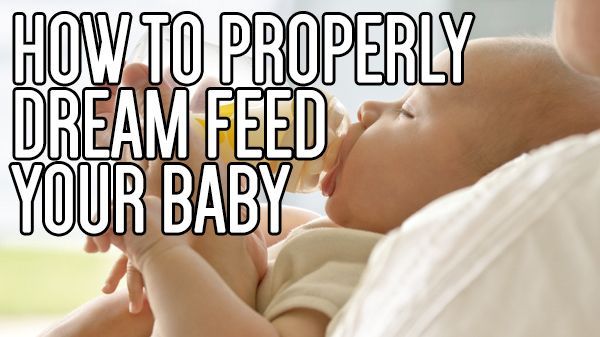
Foods to avoid giving babies and young children
Salt
Babies should not eat much salt, as it's not good for their kidneys.
Do not add salt to your baby's food or cooking water, and do not use stock cubes or gravy, as they're often high in salt.
Remember this when you're cooking for the family if you plan to give the same food to your baby.
Avoid salty foods like:
- bacon
- sausages
- chips with added salt
- crackers
- crisps
- ready meals
- takeaways
Sugar
Your baby does not need sugar.
By avoiding sugary snacks and drinks (including fruit juice and other fruit drinks), you'll help prevent tooth decay.
Saturated fat
Do not give your child too many foods that are high in saturated fat, such as crisps, biscuits and cakes.
Checking the nutrition labels can help you choose foods that are lower in saturated fat.
See more on food labels.
Honey
Occasionally, honey contains bacteria that can produce toxins in a baby's intestines, leading to infant botulism, which is a very serious illness.
Do not give your child honey until they're over 1 year old. Honey is a sugar, so avoiding it will also help prevent tooth decay.
Whole nuts and peanuts
Whole nuts and peanuts should not be given to children under 5 years old, as they can choke on them.
You can give your baby nuts and peanuts from around 6 months old, as long as they're crushed, ground or a smooth nut or peanut butter.
If there's a history of food allergies or other allergies in your family, talk to your GP or health visitor before introducing nuts and peanuts.
See more on food allergies in babies and young children.
Some cheeses
Cheese can form part of a healthy, balanced diet for babies and young children, and provides calcium, protein and vitamins.
Babies can eat pasteurised full-fat cheese from 6 months old. This includes hard cheeses, such as mild cheddar cheese, cottage cheese and cream cheese.
Babies and young children should not eat mould-ripened soft cheeses, such as brie or camembert, or ripened goats' milk cheese and soft blue-veined cheese, such as roquefort. There's a higher risk that these cheeses might carry a bacteria called listeria.
There's a higher risk that these cheeses might carry a bacteria called listeria.
Many cheeses are made from unpasteurised milk. It's better to avoid these because of the risk of listeria.
You can check labels on cheeses to make sure they're made from pasteurised milk.
But these cheeses can be used as part of a cooked recipe as listeria is killed by cooking. Baked brie, for example, is a safer option.
Raw and lightly cooked eggs
Babies can have eggs from around 6 months.
If the eggs are hens' eggs and they have a red lion stamped on them, or you see a red lion with the words "British Lion Quality" on the box, it's fine for your baby to have them raw (for example, in homemade mayonnaise) or lightly cooked.
Hens' eggs that do not have the red lion mark should be cooked until both the white and yolk are solid. So should duck, goose or quail eggs.
So should duck, goose or quail eggs.
Avoid raw eggs, including uncooked cake mixture, homemade ice creams, homemade mayonnaise, or desserts that contain uncooked egg that you cannot confirm are red lion stamped.
Rice drinks
Children under 5 years old should not have rice drinks as a substitute for breast milk or infant formula (or cows' milk after 1 year old) as they may contain too much arsenic.
Arsenic is found naturally in the environment and can find its way into our food and water.
Rice tends to take up more arsenic than other grains, but this does not mean that you or your baby cannot eat rice.
In the UK, there are maximum levels of inorganic arsenic allowed in rice and rice products, and even stricter levels are set for foods intended for young children.
Do not worry if your child has already had rice drinks. There's no immediate risk to them, but it's best to switch to a different kind of milk.
There's no immediate risk to them, but it's best to switch to a different kind of milk.
Raw jelly cubes
Raw jelly cubes can be a choking hazard for babies and young children.
If you're making jelly from raw jelly cubes, make sure you always follow the manufacturers' instructions.
Raw shellfish
Raw or lightly cooked shellfish, such as mussels, clams and oysters, can increase the risk of food poisoning, so it's best not to give it to babies.
Shark, swordfish and marlin
Do not give your baby shark, swordfish or marlin. The amount of mercury in these fish can affect the development of a baby's nervous system.
Further information
For more information and advice about babies and food, see:
- food allergies in babies and young children
- your baby's first solid foods
- baby and toddler meal ideas
Union of Pediatricians of Russia
Nutrition for children from 1 to 3 years of age
The period from 1 to 3 years of life is a crucial stage in the transition to an adult type of nutrition, which has certain features. In order to ensure that all the necessary nutrients enter the child's body and at the same time prevent an excess of individual nutrients, nutrition should be balanced and varied. nine0003
In order to ensure that all the necessary nutrients enter the child's body and at the same time prevent an excess of individual nutrients, nutrition should be balanced and varied. nine0003
The daily amount of food for children aged 1 to 1.5 years should be 1000-1200 g, from 1.5 to 3 years - 1200-1500 g, the amount of food in one feeding should not exceed 300-350 ml. The diet consists of three main meals per day and two snacks. It is considered optimal when breakfast is 25% of the total energy density of the diet, lunch is 30–35%, dinner is 20%, and additional meals are about 10%. In general, the child can eat the same food as the rest of the family. nine0003
In the diet of a child of 1–3 years of age , must be present daily: meat of animals or poultry, dairy and sour-milk products, vegetables, fruits, bread, cereals, vegetable and butter; fish and eggs are included in the diet 2-3 times a week.
Cereal products: bread - 2-3 servings per day, cereals and side dishes - 1 time per day
Fruit and/or vegetables: at least 5 times a day
Dairy products: at least 3 servings per day (including those used to make cereals, yoghurts, fermented milk drinks, cottage cheese, infant formula or breast milk).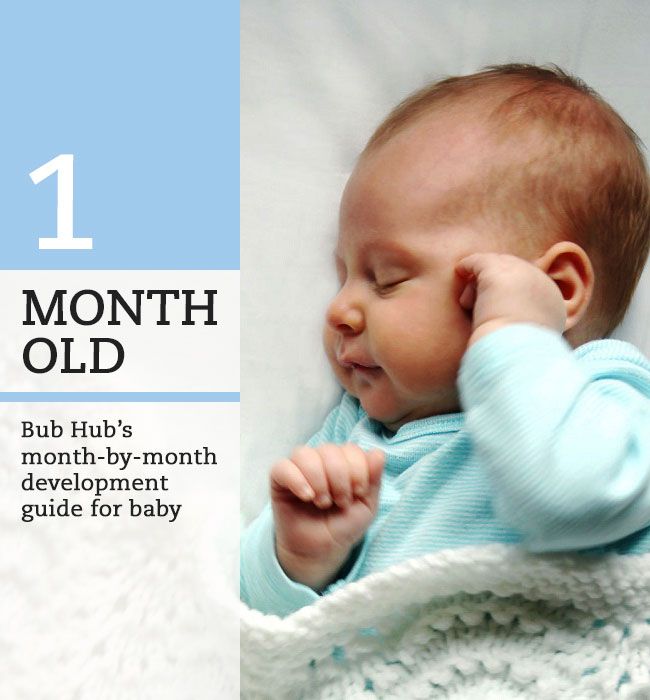 nine0003
nine0003
Domestic pediatricians recommend, when compiling a diet for children aged 1–3 years, preference should be given to specialized children's dairy products of industrial production that meet high quality requirements and safety indicators for this age. Most children's dairy products are additionally enriched with vitamins and/or minerals and other biologically active components, taking into account the physiological needs of children of this age. At the same time, in foreign recommendations, children over 1 year old are offered the gradual introduction of whole cow's milk, which is rich in fats necessary for proper growth and development, the absorption of vitamins A and D, the development of the child's brain and nervous system. nine0003
Meat dishes: 2-3 times a day
Fish dishes: 2-3 servings per week
Eggs: 2-3 per week
Dietary fats: 3-4 teaspoons of butter and/or vegetable oils per day
When cooking, use the minimum amount of salt and sugar, and do not add them to industrial products.
Offer your child a variety of foods and let them choose for themselves. Children love to eat on their own, so if possible, offer food that the child can eat with their hands. nine0003
It is important to remember that a baby can choke on pieces of food, so whatever you give your baby should be crushed or cut into small pieces that can be easily chewed.
Do not give to a small child: nuts, whole grapes, cherry tomatoes (unless quartered), whole carrots, seeds (such as pumpkin or sunflower seeds), round candies, legumes, raisins, because a child can eat them choke.
Also in the diet of children of the first 3 years of life should not be present:
Mushrooms; canned snacks, pickled vegetables and fruits
Home canned food
Dry concentrates for side dishes
Hot sauces, mustard, horseradish, pepper, vinegar, mayonnaise
Natural coffee
Juices and drinks in the form of dry concentrates; sweet carbonated drinks
Products containing food additives (flavorings, dyes of artificial origin, including chewing gum), popcorn
Combined fats; cakes and pastries
It is important to remember that children of this age should not be given too spicy and spicy foods.
List of harmful foods for children: what not to feed a child | 74.ru
Establish them away: 5 harmful products with which we feed children
- 1. Chicken nuggets
- 2. Curular flakes and muesli
- 3. SOK
- 4. Yogurt
- 5. Rasty Lapsha
- 6. More reading about kids, breakfast and food:
1
Chicken nuggets
At first glance, there is nothing wrong with nuggets - chicken breast, breading of flour or breadcrumbs, sometimes cheese - that, in general, is the whole composition. But while manufacturers focus on the fact that their nuggets are made from real chicken, let's take a closer look at this dish. The first thing that brings all possible benefits to zero is deep fat. With this method of heat treatment, carcinogens are formed, and a merciless amount of oil makes the product fatty and high-calorie. nine0003
Another point is the quantitative ratio of meat and everything else.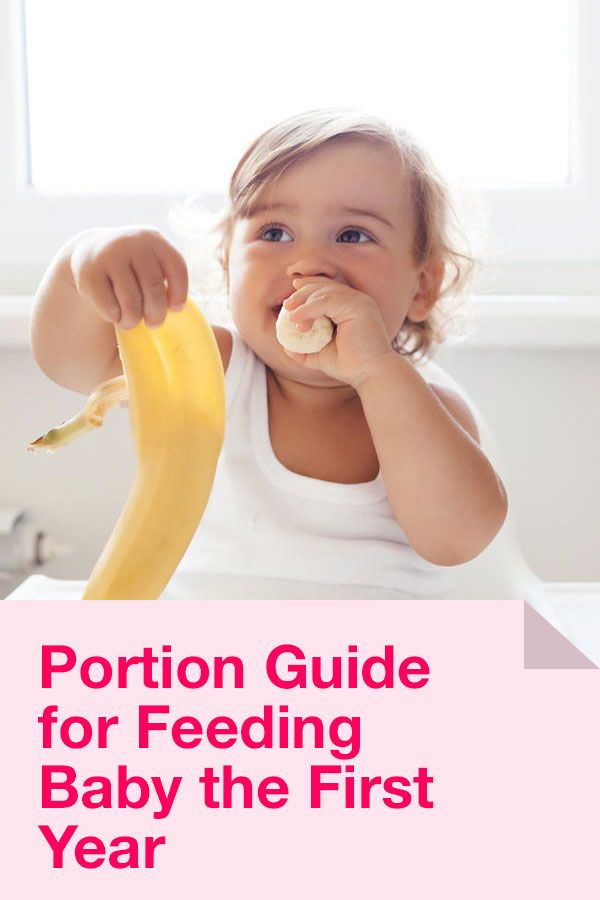 The examination showed that often there is a lot of breading in nuggets - up to 50% of the total mass. There are no regulations regarding ingredients, so, in fact, manufacturers do not violate anything. But not only do you overpay for crackers and butter, it also turns out that the protein in the nuggets is less than it should be in the chicken breast, and there are too many carbohydrates.
The examination showed that often there is a lot of breading in nuggets - up to 50% of the total mass. There are no regulations regarding ingredients, so, in fact, manufacturers do not violate anything. But not only do you overpay for crackers and butter, it also turns out that the protein in the nuggets is less than it should be in the chicken breast, and there are too many carbohydrates.
Nuggets can also contain too much moisture. Yes, this makes them juicier, but you overpay for plain water. And due to the fact that in addition to chicken meat, nuggets contain many other ingredients (including those not indicated in the composition), their nutritional value is much lower compared to the same chicken breast. nine0003
What is really hidden in nuggets
Infographics: Vitaly Kalistratov / City Portal Network
And do not forget that nuggets are a product of deep processing.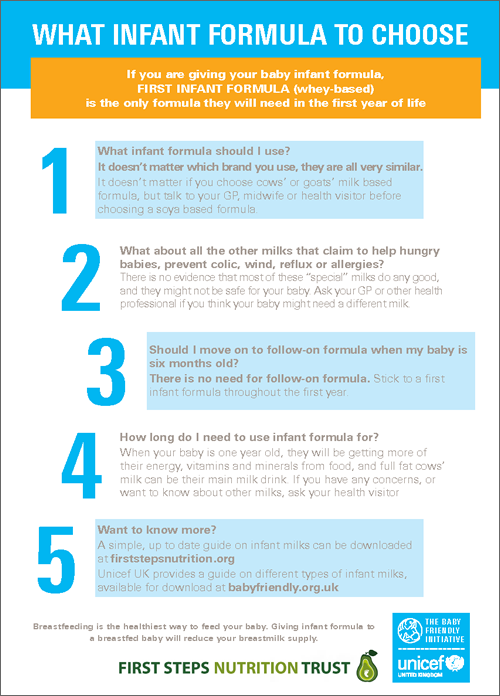 With sugar (even if it is not felt, but it is) and added fats.
With sugar (even if it is not felt, but it is) and added fats.
“Over time, due to the uncontrolled consumption of large amounts of sugar, a person develops insulin resistance,” says dietitian Irina Toropygina. - Decreased sensitivity of insulin receptors. That is, there is a lot of glucose in the blood, but it is not absorbed, does not enter the cell, the cell experiences hunger and does not receive glucose to perform energy functions. In response to this, a person consumes sweets even more and only aggravates the situation. Excessive consumption of sugar inevitably leads to the development of carbohydrate dependence and, over time, to the formation of diabetes mellitus and obesity. nine0003
Irina Toropygina — dietician, specialist in functional integrative nutrition, DNA testing specialist.
Share
2
Corn flakes and muesli
Doctors say that it is more beneficial to feed a child with biscuits than corn flakes - they even have less sugar. In addition, the option of a light and quick breakfast, beloved by children (and sometimes their parents), will “give” the body extra sweeteners, flavor enhancers and flavors. And if you see the inscription “enriched” on the packaging, this only indicates that the product has undergone maximum industrial processing. nine0019
In addition, the option of a light and quick breakfast, beloved by children (and sometimes their parents), will “give” the body extra sweeteners, flavor enhancers and flavors. And if you see the inscription “enriched” on the packaging, this only indicates that the product has undergone maximum industrial processing. nine0019
Maybe replace muesli flakes? Maybe. But not the fact that they will be more useful.
— Due to the content of cereals and nuts, any muesli is quite high in calories: from 300 kcal and more, — says dietitian Elena Pavlovskaya. - Baked ones are fried in oil, they are, of course, tasty and crispy, but this is more a dessert than a healthy meal. The recommended amount of muesli even for an adult is no more than 30–50 grams per day. Do not forget that there are contraindications to eating muesli: if you have an exacerbation of gastritis or problems with the intestines, you do not need to eat them. They contain a lot of dietary fiber, which can irritate the mucous membrane of the stomach and intestines. nine0019
nine0019
Elena Pavlovskaya — dietitian, candidate of medical sciences, researcher at the clinic of the Research Institute of Nutrition of the Russian Academy of Medical Sciences.
Share
3
Juice
Children's juice producers are usually honest with their little consumers. In their examination products, neither sulfur dioxide (a preservative), nor ethyl alcohol, nor patulin (a toxic substance of natural origin that affects the digestive tract; sometimes present in food) is found. These drinks are made from exactly the fruits indicated on the package, they even contain a certain amount of vitamins and nutrients. But what's the catch? nine0019
“Let's start with the fact that the best source of fluid for both a child and an adult is water,” says nutritionist Irina Borodina. – Theoretically, juices can be used for baby food, but we must remember that packaged juices contain a lot of sugar, have a high glycemic index, increase appetite, have a sweet taste, which can lead to the formation of wrong taste preferences and refusal of some children from unsweetened foods (vegetable puree, porridge without sugar). For children aged 7-12 months, the World Health Organization generally recommends not giving juices, but chopped raw fruits and vegetables, such as banana, melon, tomato. nine0003
For children aged 7-12 months, the World Health Organization generally recommends not giving juices, but chopped raw fruits and vegetables, such as banana, melon, tomato. nine0003
Irina Borodina — dietician, candidate of sciences, therapist of the 1st category.
Rospotrebnadzor notes that the most useful juice products are freshly squeezed juices made at home or in a restaurant. They retain the vitamins that were in the "source codes". But even they are not as healthy as whole vegetables and fruits due to the abundance of simple carbohydrates and low fiber content. Pasteurized direct-pressed juices are somewhat less useful. They are made from fresh vegetables, fruits or berries by mechanical pressing, and then kept at a temperature of 60-80 degrees: this method allows you to save a significant part of the beneficial properties of freshly squeezed juice. Reconstituted juice is even less useful. There are very few vitamins in it, and to make it healthier, manufacturers can artificially add vitamins and other biologically active substances (and this will be enriched juice). nine0019
nine0019
Restored juice - not the best treat for children
Infographics: Vitaly Kalistratov / Network of City Portals
share
4
Yogurt
If the children tried the “right” yogurt, they would most likely refuse from him once and for all - he's practically tasteless. But in a natural product there are definitely those very living bacteria for which it is valued. But the choice of thermally processed yogurts (the same ones that you see on store shelves) is Russian roulette, in which, moreover, it is important to separate at least two types of products: for babies from eight months old and for children from three years old. nine0003
Yoghurts for babies from 3 years old usually contain almost twice as much sugar as yogurts for babies from 8 months old. For a child under three years of age, this amount of sugar puts a lot of stress on the liver and pancreas.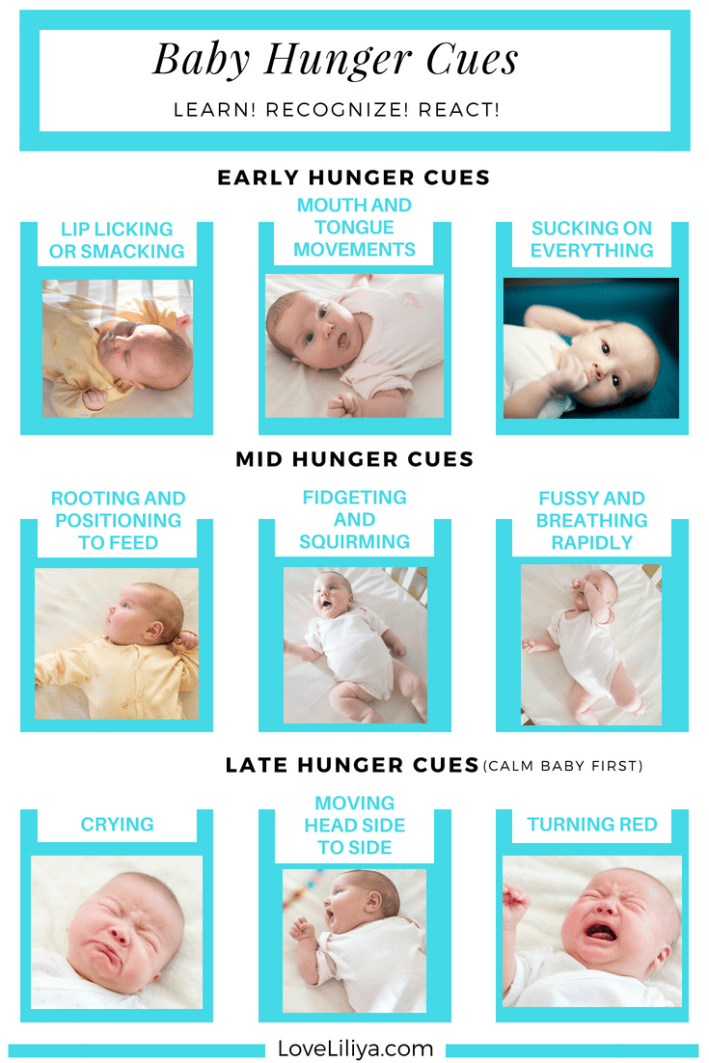 The risk of developing diabetes and obesity increases. Therefore, added sugar in complementary foods, if possible, should not be at all. Also, yogurts for children over three years old may have a higher acidity, which is also not good for babies.
The risk of developing diabetes and obesity increases. Therefore, added sugar in complementary foods, if possible, should not be at all. Also, yogurts for children over three years old may have a higher acidity, which is also not good for babies.
Children's dairy products should contain no more than 7-8% sugar. But studies show that in some cases this norm is significantly exceeded (but who will tell you about it on the package) - 10% or more. Three sugar cubes in one jar. Half the daily value of an eight-month-old baby. nine0019
“For example: ice cream contains four tablespoons of sugar, vanilla yogurt contains five, and 300 grams of sparkling water contains nine,” says Irina Toropygina. “Besides, we all heard about probiotics, but their effect is somewhat exaggerated. They artificially settle in the intestines and restore the population of beneficial bacteria. This is their main property. However, most of it is lost during digestion.
How to tell good from bad yogurt
Infographics: Vitaly Kalistratov / Network of City Portals
An important component of yogurt is calcium. According to reference data, natural yogurt should contain 110–125 mg of calcium per 100 g of product. Some manufacturers promise even more - up to 240 mg. But these numbers remain only on the packaging. Experts checked how much calcium is in different yogurts. It turned out to be 2-3 times less than promised. That is, sometimes manufacturers take the numbers on the packaging, as they say, from the ceiling.
Calcium is essential for normal growth and development of the child. With its deficiency, the formation of bones and teeth is disturbed, children suffer from nervous disorders, increased nervous excitability, and convulsions may occur. The daily requirement for calcium depends on the age of the child: from 1 to 6 months - 400 mg; from 1 year to 5 years - 600 mg; from 6 to 10 years - 800-1200 mg. nine0019
“Children get only empty carbohydrates from sweet yoghurts,” says pediatric endocrinologist Natalia Lomonosova.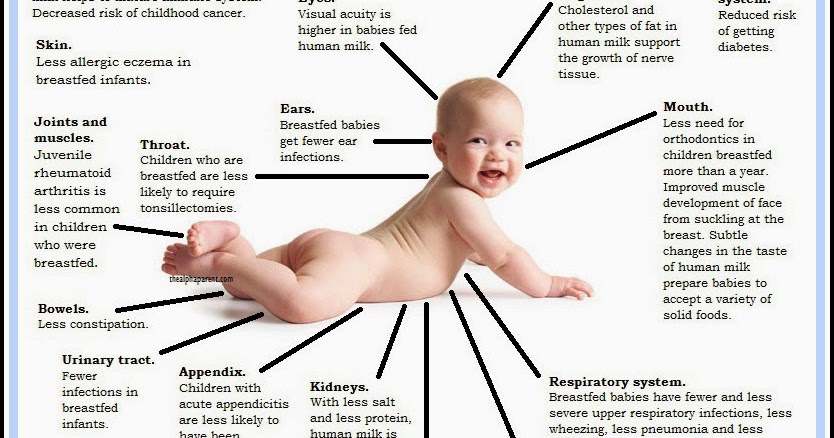 - But dairy products cannot be excluded from the children's diet. They can and should be eaten. But let it be ordinary kefir, without sugar. If the child loves "Snowball", add half a teaspoon of sugar to a glass of kefir, it will be more useful. The child will receive both calcium and protein.
- But dairy products cannot be excluded from the children's diet. They can and should be eaten. But let it be ordinary kefir, without sugar. If the child loves "Snowball", add half a teaspoon of sugar to a glass of kefir, it will be more useful. The child will receive both calcium and protein.
Share
5
Instant noodles
Although it has been proven that all these doshiraks are the same egg noodles, and without the spices that are in the package with the product, everything is not so bad, it should be excluded from baby food. Instant noodles, prepared according to the instructions on the package, are mostly rich in phthalates - chemicals that can cause endocrine disruption, reduce testosterone levels and harm reproductive performance. A large amount of phthalates, as it turned out, is contained in cheese powder (it's time to skip the cheese-flavored pack) - more only in flexible PVC and some types of cosmetics. For all that, the European Union, known for its strict regulations on food and household chemicals, has not listed phthalates on the list of highly hazardous substances, so manufacturers, in general, work within the established norms.




